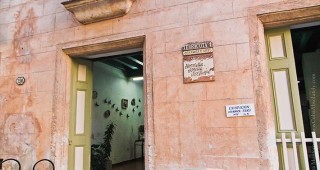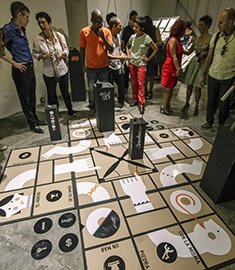
Museo Yoruba de Cuba LH  2
2
Created by, and housed in the headquarters of, the Asociación Cultural Yoruba de Cuba, this museum is dedicated to santería and features sculptures representing the different Afro-Cuban orishas (saint …

Fuente de Neptuno LH  2
2
The Fuente de Neptuno (Fountain of Neptune) was imported from Italy. Besides its ornamental function, it also supplied water to three boats at the same time, for which large iron rings were placed for …

Parque Arqueológico de la Maestranza LH  2
2
By the 1700s, Havana boasted an artillery factory for the manufacture and repair of weapons and ammunition. The factory was demolished and a “castle” was the built for the Police. This archeological s …

Museo del Naipe Marqués de Prado Ameno LH  2
2
Opened on May 2, 2001, the small yet immensely impressive Playing Card Museum occupies the ground floor of the Casa del Marqués de Prado Amero, dating from the 17th century and the oldest building in …

Avenida de Carlos III (Ave. Salvador Allende) LH  2
2
This street was built by order of Governor Miguel de Tacón in 1836 and connects the intersection of Reina and Belascoaín streets to the Castillo del Príncipe. It was originally named Paseo de Tacón. L …

Casa Oswaldo Guayasamín LH  2
2
This institution honors Ecuadorian painter Oswaldo Guayasamín (1919-1999), a dedicated socialist, supporter of the Cuban Revolution, and close friend to Fidel Castro. It’s located in an 18th-century m …

Museo de Orfebrería LH  1
1
The museum displays a collection of silver walking sticks, swords and other items of metalwork by Cuban silversmiths from the 15th-20th centuries. Especially interesting are the pieces from the coloni …

Terracota 4 LH  1
1
This is the studio-gallery of ceramicists Amelia Carballo and Ángel Norniella. Their work shows a wide variety of influences and techniques, including the millenary raku, and as the name suggests focu …

Memorial a Julio Antonio Mella LH  1
1
Across from the Universidad de La Habana is this memorial, often used to make concerts and for political or student rallies. It holds the ashes of Julio Antonio Mella, a young student leader and found …

Muelle de Luz-Ferry a Regla LH  1
1
This tiny ferry dock takes its name from Calle Luz, a nearby street. Somewhat battered passenger ferries shuttle across the bay to and from Regla and Casablanca, every 10-15 minutes or so.













